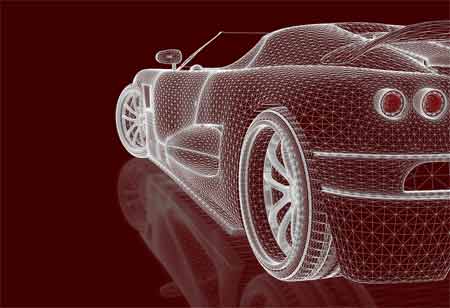THANK YOU FOR SUBSCRIBING
THANK YOU FOR SUBSCRIBING
Be first to read the latest tech news, Industry Leader's Insights, and CIO interviews of medium and large enterprises exclusively from Auto Tech Outlook

By
Auto Tech Outlook | Wednesday, February 19, 2025
Stay ahead of the industry with exclusive feature stories on the top companies, expert insights and the latest news delivered straight to your inbox. Subscribe today.
Vehicle security is evolving from key-based access to cybersecurity, integrating encryption, AI, biometrics, and OBD2 protection to prevent digital car theft and enhance safety.
FREMONT CA: Vehicle security is transforming significantly, shifting from traditional key-based access to advanced cyber protection. With the rise of connected and autonomous vehicles, security threats have evolved beyond physical theft to sophisticated cyberattacks. Automakers are integrating biometric authentication, encrypted digital keys, AI-driven threat detection, and blockchain-based security to safeguard vehicles from hacking and unauthorised access.
The Rise of Digital Car Theft
Car theft has evolved significantly from simple hotwiring. Modern thieves use advanced digital techniques to gain unauthorised access to vehicles.
One of the most common methods is keyless entry hacking, where criminals intercept and amplify signals from key fobs. This allows them to unlock and start vehicles without needing a physical key. Similarly, remote access attacks exploit a vehicle’s software vulnerabilities, enabling thieves to turn off alarms, unlock doors, or even remotely control a car.
Another primary concern is the exploitation of the OBD2 port. The On-Board Diagnostics (OBD2) port, essential for vehicle diagnostics, can be manipulated by unauthorised individuals to reprogram keys, turn off security systems, and even start the engine. These digital threats highlight the need for a more advanced, cybersecurity-focused car security approach.
Strengthening Vehicle Security with Cybersecurity
With traditional security measures becoming less effective against digital threats, cybersecurity has become essential to vehicle protection. Several key strategies are shaping the future of car security:
Encryption ensures that data exchanged between vehicles and external systems are protected from unauthorised access.
Over-the-air (OTA) Updates allow manufacturers to enhance security features and patch vulnerabilities regularly.
Intrusion Detection Systems monitor vehicle networks to identify and respond to potential threats in real-time.
Biometric Authentication, such as fingerprint or facial recognition, adds an extra layer of security by restricting access to authorised users only.
Artificial Intelligence (AI) is increasingly used to analyse driving patterns, detect anomalies, and predict possible security risks before they occur.
Enhancing Protection with the OBD2 Protection Shield Lock
Among the various security measures available, physical protection of the OBD2 port plays a crucial role in preventing digital theft. The OBD2 Protection Shield Lock is a simple yet highly effective solution blocking unauthorised port access. This device significantly reduces the risk of key reprogramming and other digital exploits by restricting direct manipulation of the vehicle's diagnostics system.
As cybercriminals develop sophisticated methods to exploit keyless entry systems, remote access vulnerabilities, and OBD2 ports, automakers and security companies must stay ahead with encryption, AI-driven threat detection, and biometric authentication. Solutions like the OBD2 Protection Shield Lock highlight the importance of proactive security measures in safeguarding vehicles from unauthorised access. By adopting cutting-edge cybersecurity innovations, the automotive industry can ensure safer, more resilient, and technologically secure transportation for the future.
 Copyright © 2025 AutoTech Outlook. All Rights Reserved | Privacy Policy | Subscribe | Sitemap | About us | Feedback Policy | Editorial Policy
Copyright © 2025 AutoTech Outlook. All Rights Reserved | Privacy Policy | Subscribe | Sitemap | About us | Feedback Policy | Editorial Policy 



